Japanese Milk Bread
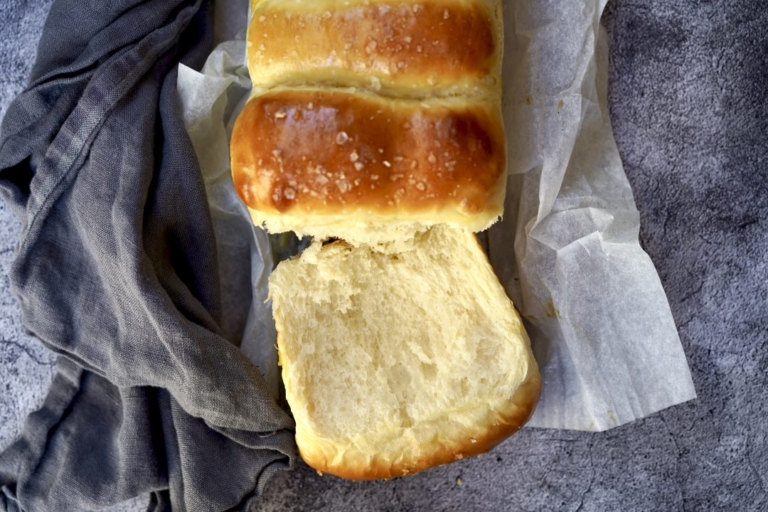
My life was forever changed the first time I tried Japanese milk bread. I’m serious, there is nothing truly like it. Pillowy is the word that comes to mind. I’ve made many breads in my lifetime, but Japanese milk bread is in a category of its own and a worthy try if you enjoy baking.
Japanese milk bread (also known as Hokkaido milk bread) is known for its distinct slightly sweet flavor and soft interior and doesn’t get stale and hard. Even several days later, the loaf will remain soft and springy like the first day. This is possible because of the heated gelatinized starch in the flour which keeps moisture inside the bread and also helps to prolong freshness.
Milk bread was developed in Japan in the 20th century, using something called tangzhong (or roux), which is a warm flour-and-water paste traditionally used in China to make buns with a soft, springy texture and tiny air bubbles. In French cooking, this would be referred to as a roux. Japanese milk bread, known for its delicate crumb and buttery taste is not nearly as complicated to make at home as one may expect.
Milk, when used to make bread, creates breads that are richer and have a more velvety texture. Milk also makes a softer crust that will brown more quickly due to the sugar and butterfat in milk. Some Japanese milk bread recipes call for dry milk in addition which some people feel makes the bread more flavorful and tender, but I disagree and do not use this in my recipe.
Annie Sheng, an anthropologist studying Asian bread at Cornell University, has pieced together her research, and according to Sheng, milk bread may have been invented by British baker Robert Clarke, who opened Yokohama Bakery in Japan back in 1862. it’s hard to say when milk bread, known as shokupan (“food bread”) in Japan, officially came onto the scene.
Some milk bread recipes (like mine) are made with tangzhong, made of a warmed milk-and-flour slurry. Others are made with yudane, a sandy flour-and-water paste that gives the loaf the right bounce and a longer shelf life. Some are just a mix of flour, milk or water, sugar, salt, active dry yeast, and at times butter.
Loaves are shaped like a flat-topped Pullman, known as kaku-shoku in Japan, or rippled with rounded ridges in the Yamagata style, but despite the method and shape, that combination of flour, some kind of liquid, sugar, salt, and yeast all lead to one thing: irresistible, cottony milk bread.
According to Eric Rath, a history professor at the University of Kansas and an author of several Japanese food history books, the Japanese considered bread a snack, which led to a preference for sweeter bread. Carbs in bread form arrived in Japan with the Dutch and Portuguese in the 16th century.
Most Japanese households didn’t have ovens, so bread never stuck as an essential food. Around World War II, we began to see bread as a staple in Japan, because rice became scarce and expensive just as American supplies of wheat and yeast were coming in “When rice was rationed during wartime, there was an emphasis on making bread“.
Rath isn’t sure exactly when milk bread reached the States, but Sheng theorizes that it could have come with the birth of Japanese grocery stores in the late 1990s, followed by the arrival of the popular Asian bakery chains like South Korea’s Paris Baguette in the early 2000s. Some Japanese milk bread is not real bread, and it’s not considered artisanal like sourdough. I beg to differ and considering how trendy it’s become recently, I think many others agree.
Japanese Milk Bread
Ingredients:
For the Tangzhong (Roux):
- 2 tablespoons bread flour
- 1/4 cup plus 2 tablespoons cold water
For the Dough:
- 2 tablespoons unsalted butter, room temperature
- 1/2 plus 1/3 cup whole milk, divided
- 1 1/2 teaspoons active dry yeast
- 2 1/2 cups bread flour, plus 2 tablespoons, divided
- 1 teaspoon kosher salt
- 2 tablespoons sugar, plus a pinch, divided
- 2 large eggs, divided
- Flaky salt
Directions:
- For the Tangzhong Roux: In a small saucepan add the flour and water and whisk until smooth. Next, place the saucepan over over low heat, and cook, while stirring constantly with a rubber spatula, until the mixture becomes thick paste, about 1 minute. Place the roux in the bowl of a kitchen mixer, such as a KitchenAid, and allow to cool completely.
- For the Dough: Place 1/2 cup of milk in a small bowl and microwave on high until warm but not hot (about 110°F), about 25-30 seconds. Add the yeast and a pinch of sugar, stir to dissolve, and set aside until frothy, about 5 to 7 minutes.
- In a medium mixing bowl add the flour, salt, and sugar and mix well to blend. Set aside.
- When the yeast is ready, add to the cooled roux mixture. Mix in the remaining 1/3 cup milk, and 1 egg and whisk until smooth. Add the flour mixture and stir with a wooden spoon until a shaggy dough forms. Attached the dough hook attachment and kneed on medium until smooth, about 2 to 3 minutes. The dough will be sticky, while kneading add 2 additional tablespoons flour. Add the softened butter and knead until the dough is completely smooth, about 2 minutes.
- Generously oil a large bowl and set aside. Form the dough into a smooth ball and transfer to the prepared bowl. Cover with plastic wrap and let rise in a warm place until doubled in volume, about 2 hours.
- Line a 8 1/2-inch loaf pan with parchment paper so that there is excess parchment hanging off the long sides, lightly oil and set aside.
- Once the dough has risen, gently punch down the dough and transfer it onto a work surface. Divide the dough into 4 equal pieces. Using a rolling pin, roll one piece of dough into a 8x5-inch rectangle. Fold a third of the dough lengthwise over toward the center, then do the same thing from the other side. Starting at a short end, roll the dough up into a tight coil. Repeat with the remaining 3 pieces of dough.
- Place the rolled dough coils seam-side down in the loaf pan. Place the milk bread in a warm place and allow to rise uncovered until doubled in volume, about 1 hour.
- Preheat the oven to 350 degrees F. In a small bowl whisk the remaining egg for the egg wash. Using a pastry brush, lightly brush the the dough and sprinkle with flaky salt. Place in the oven and bake until the top is golden-brown and shiny, 25 to 30 minutes. Allow to cool slightly before slicing.

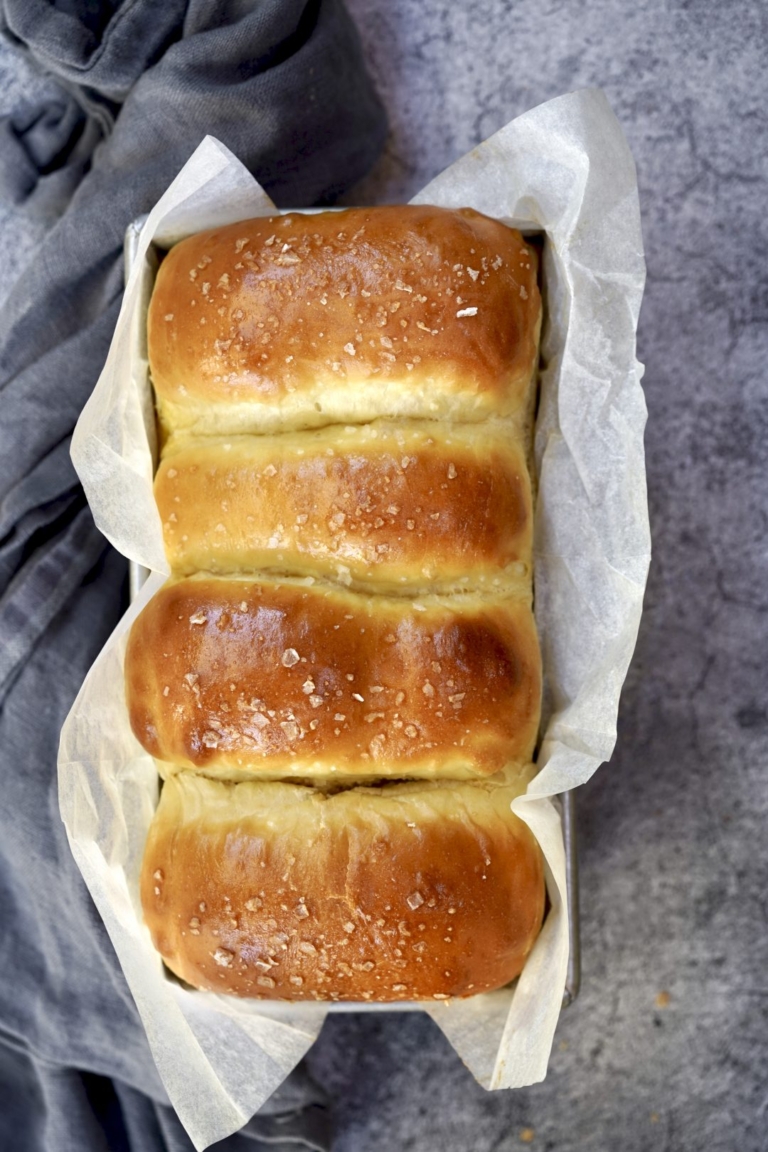
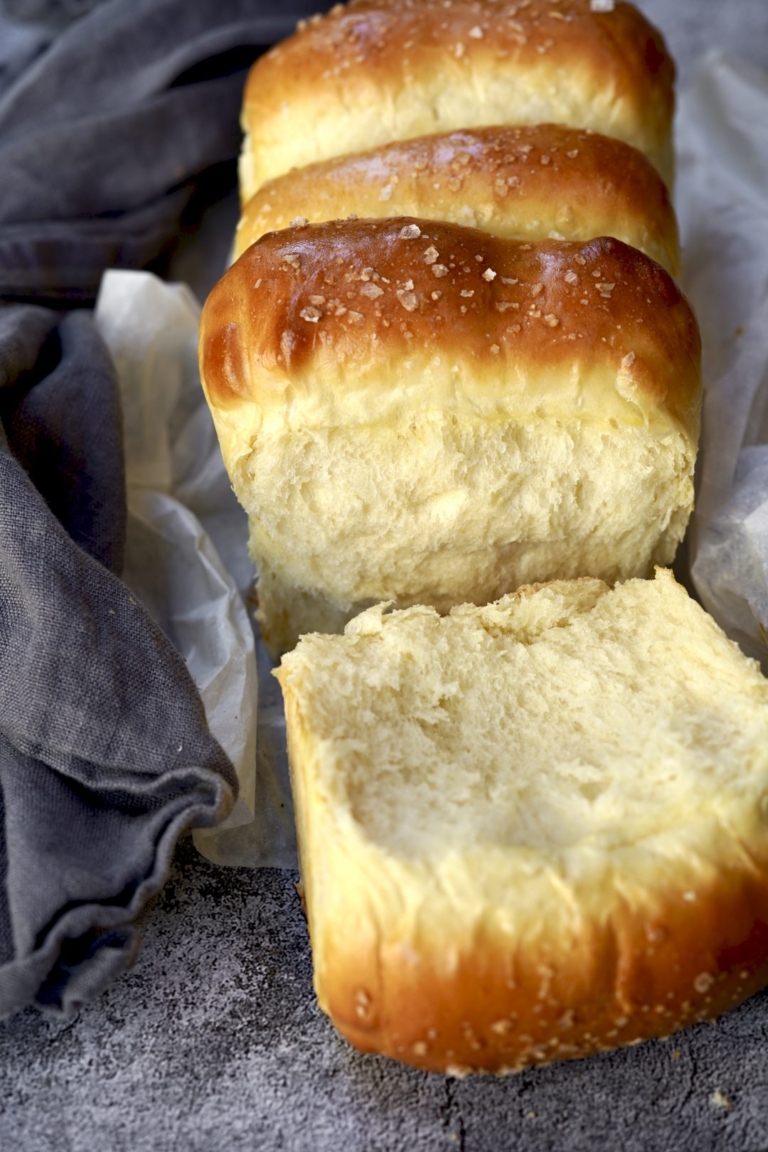
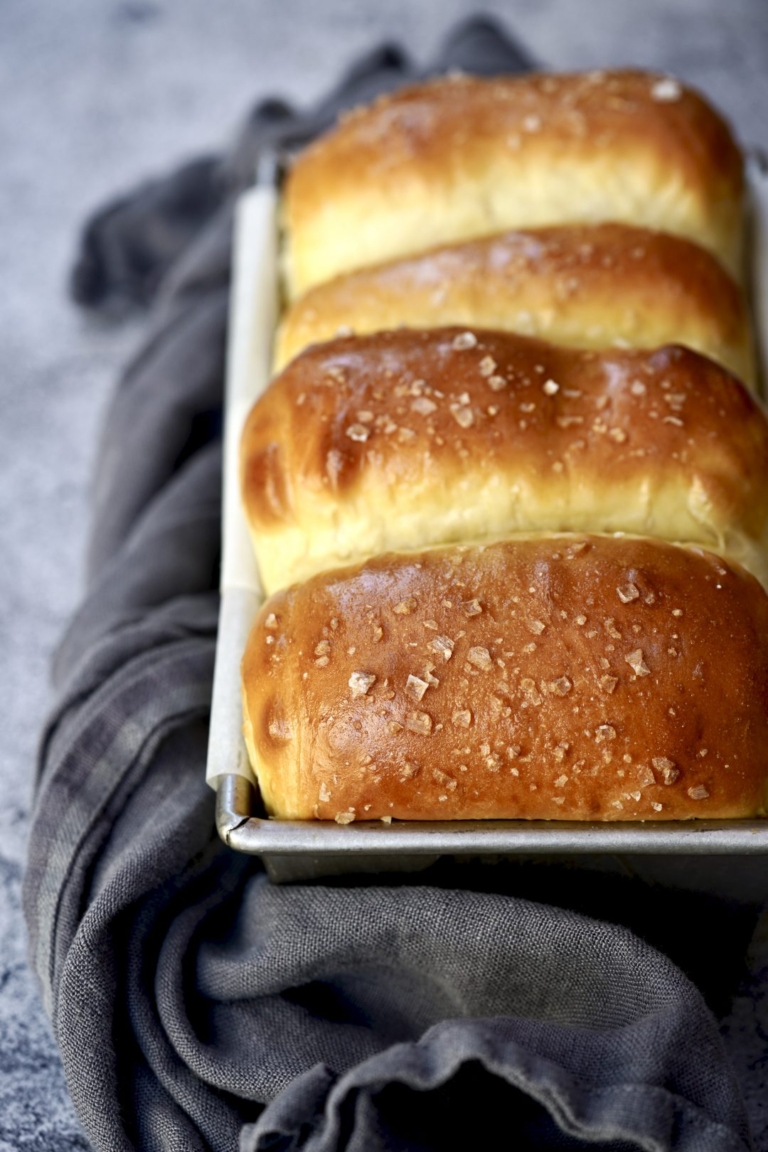
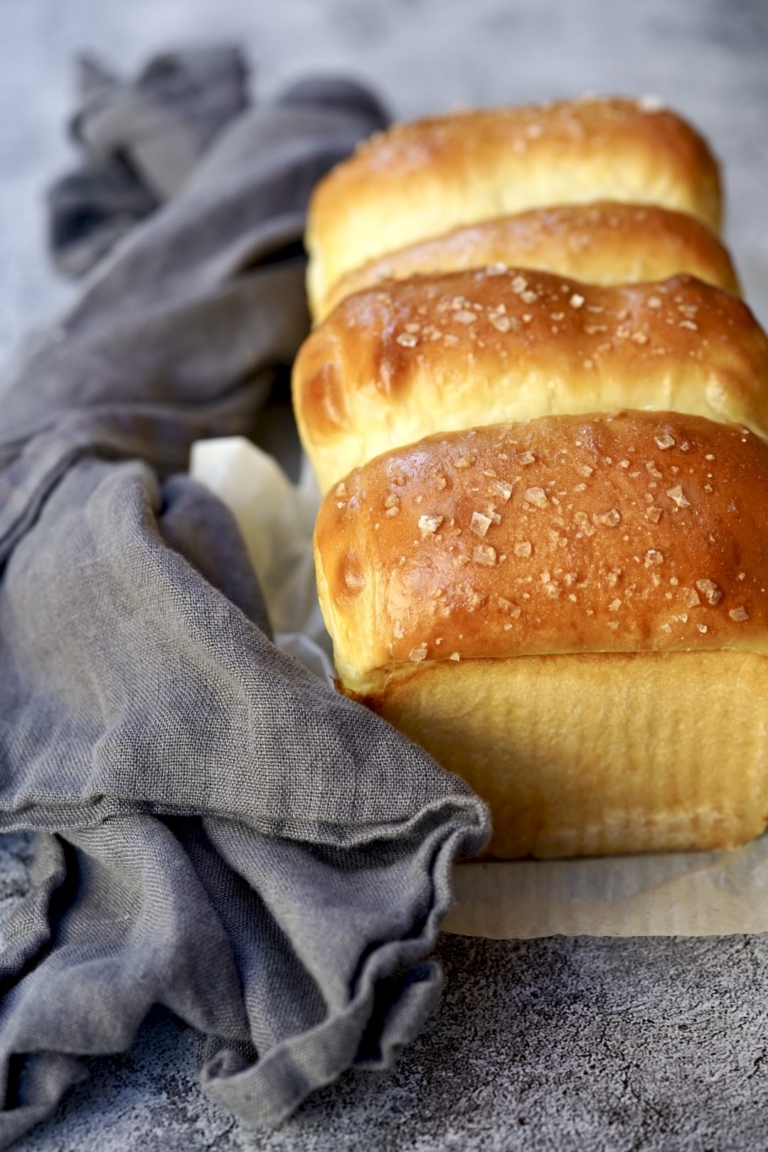
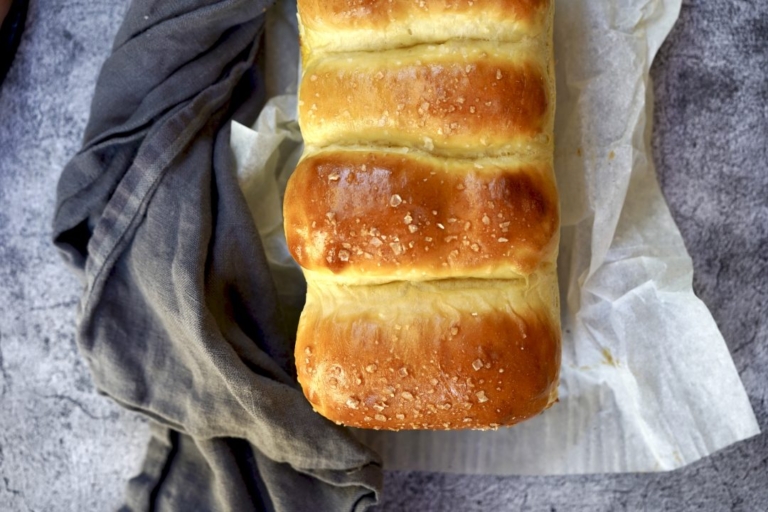


One comment on Japanese Milk Bread